Then No One Can Have Her (38 page)
Read Then No One Can Have Her Online
Authors: Caitlin Rother

When the episode aired, it included a segment from a video taken on Whidbey Island, featuring a recent interview with Carol about Touch Drawing and the work she did during these meditative sessions. I obtained the full video from Deborah Koff-Chapin, and as I watched it, I almost felt as if Carol were speaking presciently to this case.
As her curly hair blew softly in the breeze, Carol sat smiling, exuding earnestness and calm as she looked into the camera. I could see why people saw her as a guru. Asked what message she wanted to deliver to whoever might be watching, she spoke as if she had a spiritual wisdom and knowingness about her.
Carol said she hoped that people could appreciate the “sense of wonder” and “mystery” that live in the “quiet stillness” of their hearts, where they could “drop down in and tell the truth. At any moment any one of us can make a choice, but it's a choice that has to be made, that I'm going to stop doing this other thing that I've been doing, and I'm going to choose to tell the truth now,” she said.
I was so struck by that last sentence that I posted it on my website.
Carol went on to suggest that some folks may tell “malicious falsehoods to get ahead,” but even when they try to live right and authentically, they can still “betray” something deeper in themselves.
Some might say these were apt messages for Steve, the man she called her soul mate, to get in touch with his “authentic” self, the one she'd fallen in love with so many years before. To finally stop with all the stories, such as the voice-in-the-vent tale and the anonymous e-mail, all the manipulation and all the lies. To tell the truth about what happened.
Katherine believes that if Carol could weigh in on this situation today, she would do so in the same manner in which she lived her whole life: with kindness and absolution.
“Whoever did this she would have had a great compassion for. She absolutely would have. I know that sounds absolutely insane to most people, but that's who she was, and I don't feel it's my place or anybody else's to judge that. Carol would forgive him. That sounds crazy, but I felt that from the start.”
AUTHOR'S NOTE AND ACKNOWLEDGMENTS
With all its legal twists and turns, this case was one of the most complex stories I've ever encountered as an author. Sometimes I felt like it was a bear I had to wrestle to the ground. But this story really got to me on a personal level as well, not just because of the facts of the case, but because it brought up some ghosts from my own past. As a result, researching and writing this story was at times an emotionally gut-wrenching and intellectually challenging journey.
At the outset I wondered how someone could murder such a peaceful, loving and spiritual being like Carol and in such a horribly violent way. I wondered how and why, as someone who had counseled battered women and women in recovery, she stayed with Steve for so long. I could almost feel the “self-torture” she described, the pain of loving someone who had hurt and manipulated her for so many years, and I empathized with her when Charlotte sided with Steve in the divorce battle.
By the same token I was also amazed at how Steve could keep so many women on the line, even his own family members, thinking he was such a good, sensitive guy, and yet treat Carol the way he did. I wondered how he could spend and borrow so much money and cheat with so many women, and yet not be willing or able to rein himself in. Was it compulsiveness, narcissism, entitlement, greed or addiction?
I did not judge. I just dug in and searched for the answers to these psychological questions so I could illustrate and explain the dynamics of Steve and Carol's very textured and complicated lives. Along the way I felt I got to know Carol Kennedy better than most murder victims I've written about, and wanted to pay her and her story the utmost respect.
When I learned that Carol had told the newspaper reporter in New York that she wanted to write a book about domestic violence someday, I felt I had her blessing. When Katherine told me about a dream in which she described me to Carol, who then said, “She sounds wonderful,” I felt happy, as if I were really on the right track. And then, when I listened to the video and heard Carol express that prescient gem of a quote with which I ended the last chapter, I almost felt like she was talking to me from wherever her spirit had gone.
I was also drawn in by the crisp beauty and dark corners of Prescott, a small town that still seems to hold on to remnants of the Wild West and allowed Steve to womanize without consequences for so long. I was intrigued by the messiness of this ever-evolving criminal investigation, the scattershot methods used, and also the detectives' dedication to pin down leads in the end. The endless court filings and legal hyperbole. The kooky medical examiner who transported Carol's body in his truck and sent investigators on such a wild-goose chase to find Mr. 603. The ethical allegations flying in every direction, the anonymous e-mail, the voice in the vent, and the insurance money transfers. The judge with the brain tumor and the judge from the “sweat lodge” case. The Docugate scandal and the bombshell e-mail that got thrown out on this roller-coaster ride to justice. Suffice it to say, I came to empathize with the attorneys in this case, because there was so much information it became a challenge to decide what to include and what to leave out.
Because the second defense team made Jim Knapp such a major part of its case, I went more into his background, his role in this case and his death than I would have otherwise. I tried repeatedly to reach his brother, Bobby, through Jim's friends, but he didn't want to talk to me. Understanding his desire for privacy, I drew much of the information I used to craft those chapters from trial transcripts, court exhibits, witness interviews by law enforcement and my own.
Having had an alcoholic husband who committed suicideâand acted very strangely when he took narcotic painkillers and even more so when he mixed them with alcoholâI think I can safely say that Jim Knapp did the same. Yes, his life and the condo where his body was found were full of oddities, but that's what happens when addicts relapse amid depression, fear and addled thinking. To them, their lives seem hopeless and helpless, and they see no other way out. Jim's friends said he was a prankster, and they believed, as did police, that he might have staged the scene at the condo to look like something more nefarious happened, perhaps not as a joke in this case, but to protect his two young sons from the harsh truth that their father had taken his own life.
My late husband was found with a bag of crushed lightbulbs in his hotel room in Mexico, which I was told he might have been planning to eat if he wasn't successful in killing himself there by his chosen method. I can't even imagine what it must be like to be in such a depressed, inebriated haze to think that way. But in the end, suicidal people typically are not acting or thinking rationally.
One of the unusual aspects of telling this story was that I had to rely more than I typically do on document research and court transcripts than my own interviews with human beings. That's because neither the sheriff 's office nor the county attorney's office would agree to talk, citing “legal and ethical rules” and the pending appeal. That said, Jeff Paupore spoke to me briefly and the prosecution was very cooperative with releasing as public records the trial exhibits, crime scene photos and thousands of pages of investigative reports, witness interviews, and audiotapes and transcripts of Steve's many recorded jailhouse calls. I also had access to five years of court filings and transcripts from both trials. Any minor editing of testimony or witness interviews was done for storytelling purposes, mostly by deletion or for clarity or ease of reading. Any errors are unintentional.
As I mentioned, I tried to get interviews with Steve's daughters, but my attempts to do so were unanswered or rebuffed, so I respected the girls' obvious wish to be left alone. I tried to tell their side of the story through their own words when I could, or through those close to Carol who knew them well.
As I also mentioned, my efforts to speak with Steve DeMocker, his parents and siblings were rebuffed as well. Defense investigator Rich Robertson told me that because they believe he was wrongly convicted, they saw no reason to talk to me for this book. That said, I think Steve's and his family's comments at the sentencing, as well as the emotions they expressed in the postverdict jail calls, are indicative of what they likely would have said to me. Luckily, I found others who were more than willing to talk about him and what makes him tick.
When I asked for interviews with John Sears and Craig Williams, the lead attorneys from Steve's two defense teams, neither one agreed. Nor would they provide me with any “released” defense exhibits or investigative reports that I couldn't get through the courts.
When the county attorney's office wouldn't let me publish the evidence photos it had released to me as public records, Robertson kindly gave me permission to publish his, and I thank him for that. He was also the only person from the defense team who was willing to answer my questions and help me fact-check, which proved invaluable. Although I'm not required to give a “balanced” version of a case in a book, as news outlets are supposed to do, I also don't like to write one-sided stories quoting only those people who think the convicted killer was a bad person and did the deed. I'm grateful that Robertson made himself available to me so there was least one voice representing Steve's and the defense's perspective. I just wanted to state for the record that it wasn't for lack of trying on my part.
I don't believe that anyoneâeven a convicted killerâis all bad, any more than I think crime victims or their family members are all good. People are human and flawed. In this case Carol and Steve were victims of love, obsession and addiction, as well as a desire to make their relationship work and last, despite numerous red flags along the way telling them to stop. This is a tragedy all around, especially for their daughters, who have now effectively lost both parents.
It felt very rewarding to get such an extraordinary degree of cooperation from Carol's family and close friends. I am especially grateful to Katherine Morris, Debbie Wren Hill and Ruth Kennedy for giving me the backstory of Carol and Steve's relationship, and for helping me illustrate how its dynamicsâand Steve's personalityâevolved as he earned and spent more money, up until the day she was murdered. Like me, they wanted Carol and her spirit to be remembered in a case that has been so centered on Steve. I know that rehashing some of this was difficult for them, and I am thankful that they helped me capture her and her words. I also am grateful for the contributions of Sturgis Robinson, who gave me some crucial insights into Steve's character. The conversations and events these folks re-created for me were approximated from memory, which I cross-checked with official sources wherever possible.
I want to thank all the other people who gave me interviews or helped me gather photos, documents and information. I send a special nod to Sue Willoughby, who first sent me news articles informing me of this fascinating case, then later took some photos for the book. She'd originally contacted me after reading my book
Dead Reckoning,
which features two other murder victims from Prescott: Tom and Jackie Hawks. A retired Yavapai County probation officer, Tom owned Matt's Saloon, a bar on Whiskey Row near Van Gogh's Ear and across the street from the courthouse, where I had a drink in the Hawkses' memory during my research trip for this book.
Dead Reckoning,
which features two other murder victims from Prescott: Tom and Jackie Hawks. A retired Yavapai County probation officer, Tom owned Matt's Saloon, a bar on Whiskey Row near Van Gogh's Ear and across the street from the courthouse, where I had a drink in the Hawkses' memory during my research trip for this book.
Because Prescott is such a small town and the college was such a microcosm, privacy was a concern for some of the people I interviewed, as well as some interviewed by law enforcement, so I used a number of pseudonyms in this book, which are noted in the text.
Big thanks also go to: Les Stukenberg, Michelle Madigan Herman, Jakob Trierweiler, Tina Fenton, Shelly Bacon, Penny Cramer, Sheila Polk, Mike Sechez, Jeff Paupore, Sally and Casey Ober, Sandy Moss, Joanne Frerking, John Lutes, Clayton Heath, Ken Morley, Dan Spencer, Julie Bull, Bonnie Manko, Rick Debruhl, Deborah Koff-Chapin, Ken Korn, Jack Nathan, Janice DeMocker, Carole and Chris Scott, Sharon Whitley Larson and Géza Keller.
Also much thanks to my agent, Peter Rubie, as well as to Michaela Hamilton and Karen Auerbach at Kensington, and to photographer Joel Ortiz.
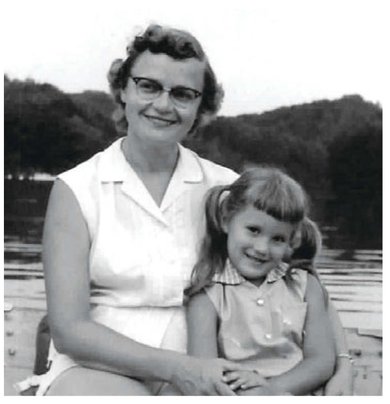
Five-year-old Carol Kennedy and her mother, Ruth, in 1959.
(Photo by A.G. Kennedy)
(Photo by A.G. Kennedy)
Carol and her brother, John, on his high-school graduation day in 1970.
(Photo by A.G. Kennedy)
(Photo by A.G. Kennedy)
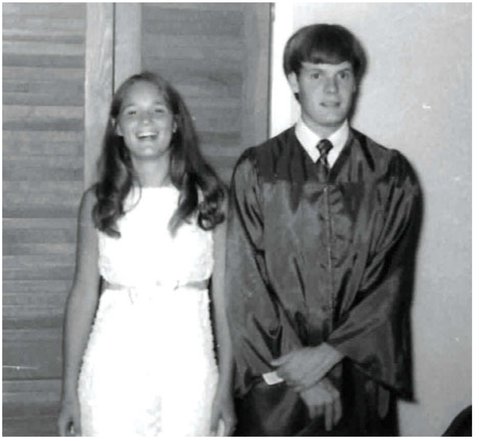
Married in 1982, Carol Kennedy and Steve DeMocker were very much in love and considered each other “soul mates.”
(Photo by Debbie Wren Hill)
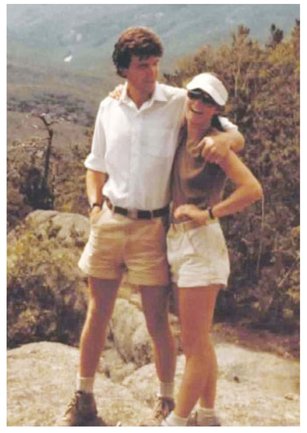
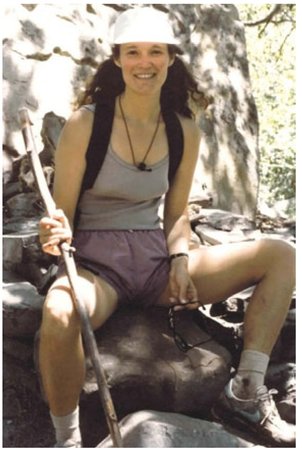
Carol hiking in Ojai, California, around 1985, before she and Steve had children.
(Photo by Debbie Wren Hill)
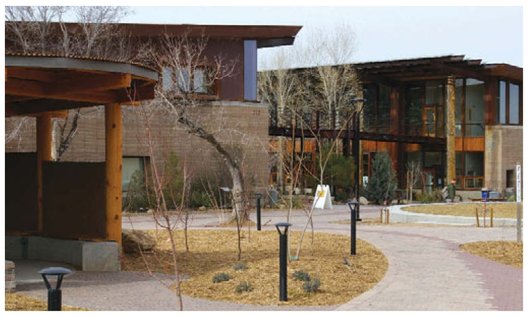
Prescott College, where Steve earned a bachelor's degree, taught sociology and went on to become dean. Carol taught Yoga Psychology and Dream Work there as well.
(Photo by author)
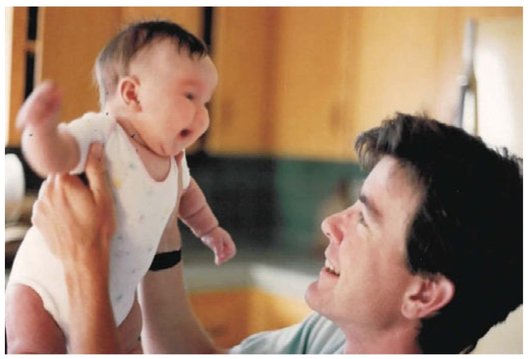
Steve holding their first daughter, Katie, as an infant in Prescott.
(Photo by Debbie Wren Hill)
In 1992, Steve built a small hay bale house on Bridle Path, which later became the guesthouse.
(Photo by Rich Robertson)
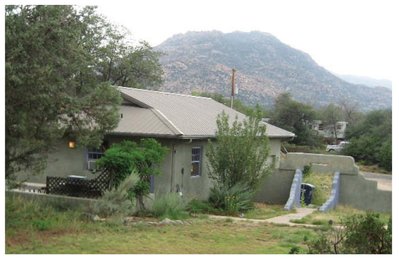

Carol designed the main house on Bridle Path, into which the family of four had moved by 1997.
(Photo by Rich Robertson)

A majestic view of Granite Mountain from Williamson Valley Road, about a mile from the house.
(Photo by Sue Willoughby)
(Photo by Sue Willoughby)

Carol worked in sales and also showed her own art at Van Gogh's Ear gallery on Whiskey Row.
(Photo by author)
(Photo by author)
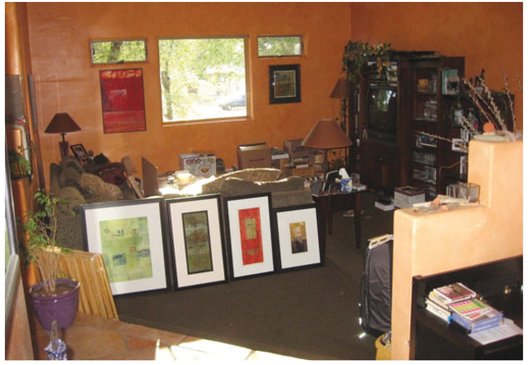
Just before her death, Carol gathered some of her artwork in preparation for a garage sale.
(Photo by Rich Robertson)
(Photo by Rich Robertson)
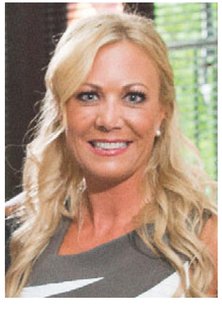
Carol and her close friend and former student, Katherine Morris, spoke by phone just hours before Carol was murdered.
(Photo by Jason Hales)
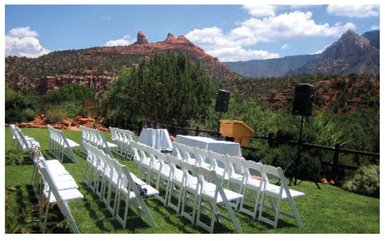
Ruth and John Kennedy flew in from Nashville to attend the ceremony.
(Photo by Katherine Morris)
Other books
Everything Under the Sky by Matilde Asensi
Lady Macbeth's Daughter by Lisa Klein
The Whole Golden World by Kristina Riggle
Dark Daze by Ava Delany
Alex Haley by Robert J. Norrell
Sexus by Henry Miller
Wallflowers by Eliza Robertson
Still Here by Lara Vapnyar
Brown-Eyed Girl by Virginia Swift
